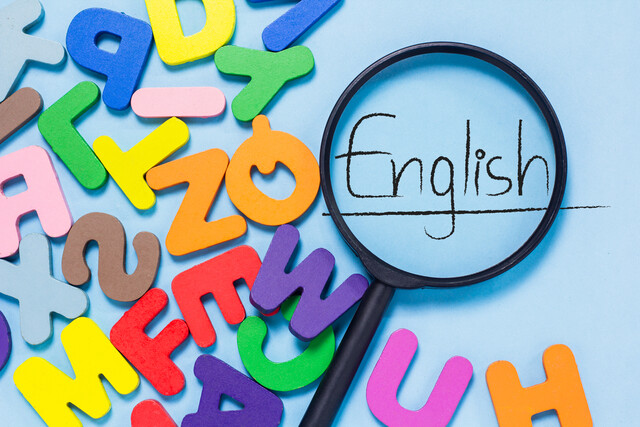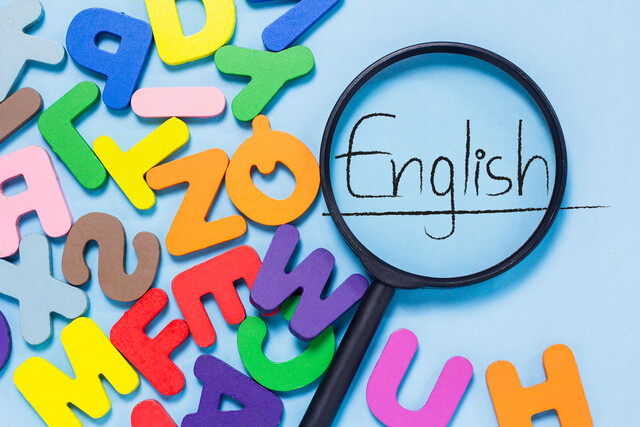Teaching comparisons is another chance for your students to have a lot of fun while they are learning. While a good ESL teacher always tries to make every class fun, that can be a challenge when the subject is something like a complicated grammar form.
A class on comparisons, on the other hand, offers plenty of opportunity to compare objects, photos, people and life experiences while learning the right way to talk about them.
In the teaching world this subject is called comparatives and superlatives, which you can include on the board and at the top of handouts, but for the purpose of your class it's good to call it "comparisons" since that is a more common word in our day-to-day living.
Sometimes, especially for beginning learners, comparatives (bigger than, etc.) are taught separately from superlatives (the biggest, etc.) and some textbooks do it that way. This lesson plan combines the two.
Lesson plan
Class objectives:
-Students will learn the grammar of comparative and superlative forms and use these forms in talking about things and people and in a text
-Students will learn adjectives such as exciting, interesting, friendly, rainy, hardworking, expensive, modern.
Note: This is a low-intermediate classroom lesson that would come after present simple lessons as well as after lessons on describing people and basic adjectives, so the students would already know words like hot, cold, old, young, tall, short, big, small, etc.
Presentation
Present and teach the following vocabulary words with the methods we have covered:
exciting, the same, interesting, friendly, rainy, hardworking, expensive, modern
After the vocabulary, start off by using images of three people. If you don't have images, draw them on the board.
If drawing is not your strong suit, you can make this easy by just drawing simple faces within three circles, the first a man with hair, the second balding, the third bald with some wrinkles. You can emphasize this by writing ages above each drawing:
50 years old 70 years old 90 years old
Below the images write:
1 syllable
old older the oldest
(We always include "the" with the superlative to reinforce that it is always used in these kinds of comparison sentences.)
Start by saying "old" out loud, pointing to the "1 syllable" on the board. Then say each word out loud, indicating the images, and have them repeat. Do this several times. This introduces comparisons with adjectives that are one syllable.
Now use or draw three cars. Draw years above them:
2016 2017 2019 (or the current year)
Below the images write:
2+ syllables
modern more modern the most modern
Again, start by saying "modern" and indicate "2+ syllables," then say each word out loud, indicating the images, and have them repeat several times. This introduces comparison with adjectives that are more than one syllable.
Now draw three images: a sun next to clouds, a sun alone, a big sun with many rays.
Below the images write:
-y
sunny sunnier the sunniest
Notice the underline under the "y" in "sunny." Do the same modeling and repetition for these words, pointing out the "-y" at the beginning. This introduces the exception to the two-syllable rule.
Under the word "old" write "big." Under "older" write "bigger," and under "oldest" write biggest.
Do modeling and repetition. Repeat by writing in the column "young, younger, the youngest," etc as below. "Big" is included to show the double-G spelling, and "nice" shows that the E is not doubled. You will end up with columns like this:
1 syllable
old older the oldest
big bigger the biggest
young younger the youngest
nice nicer the nicest
Go back to the cars, and in the same way as above, make columns like this, having the students repeat each line as you finish it:
2+ syllables
modern more modern the most modern
expensive more expensive the most expensive
interesting more interesting the most interesting
Do the same for the sun images with "2 syllables -y" including the verbal repetition, again underline the "y" in each case:
2 syllables -y
sunny sunnier the sunniest
easy easier the easiest
friendly friendlier the friendliest
Under all the columns, write and do the verbal repetition with following, which presents the two most common irregular forms of adjectives:
(special/irregular)
good better the best
bad worse the worst
Note: In a more advanced class, other irregular adjectives would be introduced, such as gentle, narrow, far, etc.
Now go back and circle everything in the first two columns. Write "2 things" next to the circle on the left. Circle the whole third column and write "3+ things."
Now have the students write the words in their notebooks while you monitor them for spelling, etc.
Tell students to close their notebooks. Go back to the board and erase words so you leave this:
1 syllable
old older the oldest
big ------- the biggest
young younger the -----------
----------- nicer the nicest
2+ syllables
modern more modern the most modern
expensive ------ ------------ the most expensive
interesting more interesting --- ------- --------------
-y
sunny sunnier the sunniest
easy ----------- the easiest
friendly friendlier ---- --------------
(special/irregular)
good --------- the best
bad worse ---- ---------
Check by going back to each line, indicating each word and having the class say it, and pausing on the blanks for the right answer.
If you hear any wrong answers, for example for the first blank of for "bigger", point out the category "1 syllable," say "1 syllable" and then first read aloud "old, older, the oldest," then "big" and pause for the class to answer "bigger."
Now write:
I am old. My mother is older. My grandmother is the oldest.
My mother is older than my sister.
My mother is old, but my grandmother is older.
You can finish up the presentation with some simple realia. Have two students stand up and ask "Who is taller?" Write the question and answer on the board. Then have another student stand up. Ask "Who is the tallest?" and again write the question and answer.
Practice
The following practices can be introduced with the techniques we have covered. Practice 4 and 5 are similar and one could be skipped to save time for the Production.
Practice 1:
Give the comparison form for each adjective.
Example:
easy easier
beautiful more beautiful
1. important ____________
2. fat ____________
3. small ____________
4. interesting ____________
5. weak ____________
6. modern ____________
7. funny ____________
8. careful ____________
9. bad ____________
10. big ____________
11. boring ____________
12. angry ____________
13. good ____________
Practice 2
Write the superlative form for each adjective.
Example:
heavy the heaviest
extraordinary the most extraordinary
1. important ____________
2. fat ____________
3. small ____________
4. interesting ____________
5. weak ____________
6. modern ____________
7. funny ____________
8. careful ____________
9. bad ____________
10. big ____________
11. boring ____________
12. angry ____________
13. good ____________
Practice 3
Write any words in the blanks.
Example:
A car is slower than a plane .
A bike is slower than a car.
I think German food is the best food in the world.
1. A ______________ is faster than a ____________________.
2. A ______________ is bigger than a ____________________.
3. A ______________ is more expensive than a ________________.
4. A ______________ is taller than a ____________________.
5. _______________ are better than ___________________.
6. A minute is __________________ an hour.
7. An hour is ____________________ than a minute.
8. An elephant is _________________ than a cat.
9. ______________________ is the biggest city in the world.
10. I think ______________________ is the best food in the world.
Practice 4
Fill in the sentences with the comparative or superlative form.
Example:
The weather is sunnier in California than in Oregon. (sunny)
Los Angeles is the sunniest city in California. (sunny)
1. Maria is _______________ than Juan. (hardworking)
2. Karen is _______________ in the office. (hardworking)
3. Karen is _______________ than Maria. (nice)
4. She is _______________ employee in the office. (nice)
5. Helen is _______________ than Maria. (slow)
6. Karen is _______________ employee in the office. (good)
7. The weather in Los Angeles is _______________ than in Oregon. (hot)
8. The food in New York is ________________ than in Los Angeles. (good)
9. The food in New York is ________________ than in Los Angeles. (expensive)
10. London is ________________ city in the world. (expensive)
11. I like Italian food, but Mexican food is ________________ in the world. (good)
12. Maria thinks Italian food is _______________ than Mexican food. (good)
13. I think British food is _____________ than German food. (bad)
14. Maria thinks that British food is ________________ in the world. (bad)
15. The buildings in Paris are __________ than in New York. (old)
16. The buildings in New York are ______________ than in Paris. (modern)
Production
Here are some fun exercises that can be done to get the students using what they have learned. With all these exercise, you would introduce then my modeling the activity and the desired result with the techniques we have learned in previous lesson.
Some of these exercises would also be good for Practice activities.
-Comparison chain game: This fun activity really challenges the students to use their vocabulary while practicing this grammar. Start by showing this on the board:
FOOD
Burritos are bigger than tacos.
'
'
Tacos are healthier than pizzas. '
'
Pizzas are better than hotdogs.
Show the students that they must use a new adjective and noun from the same category (food) each time they make a new sentence in the change (indicated here by the underlining. Then show a new category:
PLACES
Museums are more expensive than parks.
'
'
Parks are nicer than schools.
'
'
Schools are more exciting than subways.
The goal is to keep the chain going as long as possible. When one person cannot think of something to continue or uses a noun or adjective again in the chain, they lose. The winner gets one point.
Model the exercise with a student. Write your name and the student's name on the board. Let the student win and write one point under the student's name. Then let the students play the game in pairs by providing them with starters:
FOOD
Burritos are bigger than tacos.
PLACES
Museums are more expensive than parks.
ANIMALS
Cats are nicer than dogs.
TYPES OF FOOD
Italian food is heavier than Japanese food.
WEATHER
California is sunnier than New York.
-Comparing each other and making a presentation: In pairs, have the students determine who is
-taller
-shorter
-friendlier
-nicer
-lazier
-hardworking
(etc.)
Then have the students ask each other questions about their families to get information on the following topics: their families (who is the oldest, youngest, nicest, smartest, most hardworking, laziest, which one person in the family is more friendly than the other, etc.) Give these questions to your pairs:
In your family..
Who is the oldest?
Who is the youngest?
Who is the smartest?
Who is the most hardworking?
Who is the nicest?
Who is the laziest?
Compared to one brother or sister (or mother or uncle or aunt).
Who is older?
Who is smarter?
Who is nicer?
Who is lazier?
Who is friendlier?
This could also be a free-form exercise where the students offer information about their families instead of only answering question.
Afterwards, have the students stand up one at a time and present their partner. For example: "Juan is older than I am. He is friendlier than I am. Juan has two brothers. Miguel and Alberto. Juan in the oldest. Albert is the youngest. Miguel is the tallest and Juan is the shortest. Juan is the laziest. Miguel is smarter than Alberto. Albert is more hardworking than Miguel. Miguel is the nicest."
-Describing photos: Hand out photos and have students take turns describing them in their pairs. This activity has many possibilities. One photo can be of different types of food, one can be of three different cities or locations (a farm, a city, a beach), a group of three very different looking people, etc. You could use the realia of travel brochures for this exercise.
-Making lists: Have the pair make of list of things they think are better, more interesting, more exciting than others as well as the best, the most interesting, the worst. Food, drinks, places, movies:
"Burritos are better than hamburgers. Pizza is the best."
"Comedies are more interesting than Action movies. Sci-fi movies are the most
interesting."
"I think Star Wars is the best film. The worst film is."
-World Records: Hand out copies of pages from the Guinness Book of World Records, the same pages to both students in the pair. Based on the info in the handouts, have them ask each other (for example) "Who is the fastest person in the world?"
-Menus: Using the realia of actual menus gives a bit of added fun to this exercise. Hand out the menus, the same one to each student in the pair, and have the students ask and answer questions like "What is the most expensive thing on the menu? What do you think is better, the pasta or the hamburger?
-Comparing facts about cities: Hand out a list with information about three cities. Population, attractions, weather, etc. Have the students ask and answer such as "What city is the biggest? Is Paris bigger than Los Angeles?























